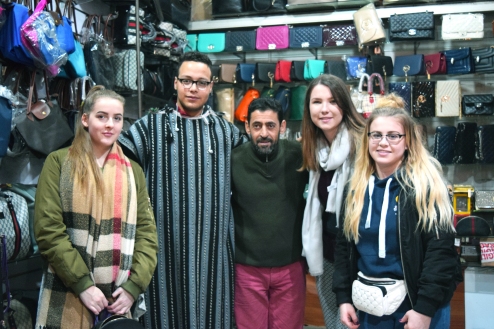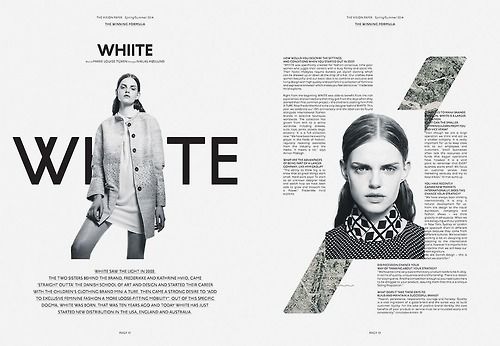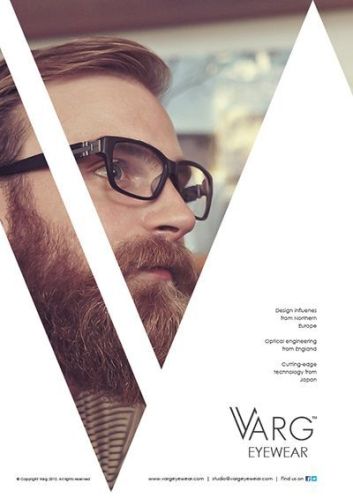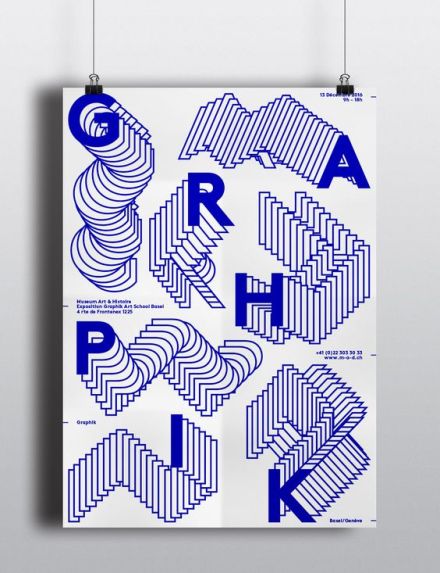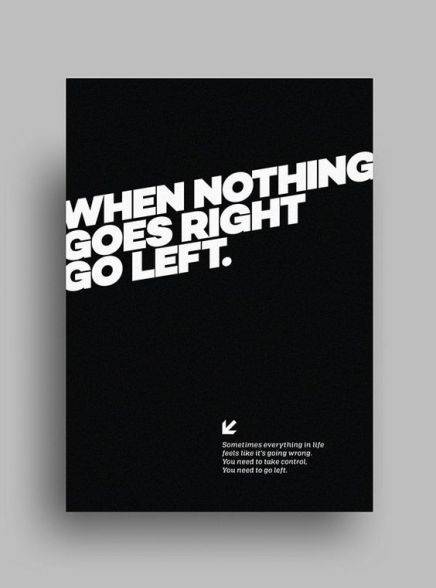Recently I made a weeks’ trip to Morocco for a field project. Below, is a detailed account and reflection of what happened on each day during my visit.
DAY 1
Leaving at 2am from Cardiff Metropolitan University, Llandaff Campus, was not something I had hoped for, considering how early in the morning it was. We arrived in Marrakech around 3pm, taking a bus to the hotel. I was immediately stunned at what looked like the chaos of the center of the Medina with the traffic. The Medina, meaning ‘town’ in Arabic, was the old walled quarter of Marrakech. The wall was made of red clay and had holes in, which were imprints from the scaffolding from when the wall was in construction. This ensured that the wall did not collapse when molded together during construction. This information was given to us by the tour guide as we were transported from the airport to Riad Bahia Salam; our accommodation for the week we were spending in Marrakech.
As we got further towards the hotel the traffic and fumes grew heavier. When we arrived at the hotel we were welcomed with traditional Berber tea, or as the Moroccan’s preferred to call it ‘Berber whiskey’. Alongside we were offered a sweet pastry-like bread. Soon after we went on a brief walk along the street and part of the souks by our lecturer, Chris.
Later in the evening, we walked to the Clock Cafe, about a mile away from the riad. For the first time, I tried a camel meat burger, which I have to say was truly delicious.
DAY 2
The first morning in Marrakech was glorious; although slightly chilly. We were served with a traditional Moroccan breakfast by the hotel with freshly squeezed orange juice. After breakfast, we were taken to the Mellah square, and then the Bahia palace which was a few hundred yards away. Much to our benefit, these places were just a short walk up the street from our hotel.
The Bahia palace entrance opened with a driveway framed by an array of trees and plants. Orange trees, blossoms, cacti, and succulents braved the consumption of the carbon fumes from the city. The palace grounds resembled a paradise, blocked out from the commotion of the city streets compared to the palace grounds. The palace opened with two walkways into a simple courtyard. White arches and a rotting green and white tile floor. A corridor then lead us to a gorgeous riad filled with orange and banana trees that towered over the surrounding roofs. The tour guide described how every surrounding room had no specific function, whether it be a dining room, sitting room, or bedroom. A true riad would feature elaborately decorated walls with intricate tiles and hand-carved wooden panels, as well as a source of water placed in the center. In most cases, the source of water would feature a water fountain made of marble to maintain the elaborate nature of decoration. The floors were made of marble tiles to relieve residents of the scorching hot weather they had to face, day-to-day for most of the year. Temperatures could reach 51’C in the middle of the summer in Marrakech. Because the floors were made of marble, many of the floors that were exposed had deteriorated due to weather conditions. Moving to the next court in the palace, white arches were prominent in the architecture. From there we were directed to the servants quarters which featured the largest court of the palace, and what was possibly the most used. Next to this court was a garden used by the owner of the palace, alongside his bedroom. The area where his bed would have laid would be used by him as well as his four wives. Trailing back to the entrance of the palace was a room that would have been used for parties or gatherings.
The decoration and design of patterns with tiles within the palace was incredible. I couldn’t have imagined the craftsmanship that would have gone into creating the patterns in the riads and courtyards. Ceramicists and carpenters carving and chipping away at stone and wood.
After completing a tour of the Bahia Palace within two hours, we then moved on to a tour of the main souks. We explored the souk where meat was sold, where leather was made, metal was welded, and clothing, accessories, decoration, and furniture were sold. We ended in the Jemaa el-Fnaa square. Within the square there laid the infamous snake charmers, performers, and various stall keepers. An unfortunate thing about the square was that we were asked to pay these performers if we took photos or videos. Luckily we could gather sound recordings on our phones of musicians playing Arabic tunes as possible contributions towards our group videos we were going to compile after we got back to the university.
DAY 3
On the second full day we were spending in Marrakech, we all took a 30 mins coach journey to the Yves Saint Laurent Museum, Le Jardin Majorelle, and the Berber Museum within Le Jardin Majorelle. First, we visited the YSL Museum. Within the museum, there was a temporary exhibition of work that had been produced in Morocco, containing paintings and sketches. A permanent exhibition featured Yves Saint Laurent’s work, including his sketches, photographs, samples, and replicas, remakes or genuine artifacts of his fashion pieces. These were utterly mesmerizing to see. The amount of work that had gone into his pieces and seeing them in the flesh was incredible. Yves Saint Laurent had changed the world of fashion forever with his eccentric ideas, yet flattering designs of clothing for people to wear.
Le Jardin Majorelle was a source of inspiration for Yves Saint Laurent and was a pivotal starting point for what changed his career. You could see how his designs had changed after he visited Morocco.
Along a pathway surrounded by magnificent cacti, was a gorgeous Majorelle blue building, and inside was the Berber museum. Within the Berber museum, various pieces of traditional Berber artwork were shown, along with traditional cultural artifacts, such as tools, decoration, clothing, masks, accessories, and so much more. These were wonderfully shown in cabinets, and in one room there were mirrors with a dark ceiling and small lights, which portrayed the stars. Unfortunately, all the information in the museum was given to us either in French or Arabic, however, I managed to find some information online from the Britannica Encyclopedia, giving me an idea of the history of the Berber people and where they came from.
To this day, 14 million Berbers from several communities scattered across Morocco, live in valleys. Many other communities live in Algeria, Libya, Egypt, Tunisia, Niger, Mali, and Mauretania. Exploring more in-depth into the Moroccan Berbers, I looked at another website; https://www.journeybeyondtravel.com/blog/morocco-travel-berbers.html. It explains how the Berbers in Morocco have in fact dated back to prehistoric times, 4000 years ago. Calling themselves Amazigh, they have developed their own language by the use of their tongue as well as script and kept using it for 2500 years. Unfortunately, I did not see any Berber writing in the museum at the Majorelle Gardens. The Berbers, named ‘Berber’ deriving from ‘barbarian’ by the Arabs, were tasked by the Arabs to conquer Spain. Islam was introduced to the Berbers in the 9th-10th century, however, the Berbers were primarily Christian or Jewish. Most Berbers today are traders turned to farmers, living in the mountains, although some small shops, cafes or small restaurants still remain to cater to local or foreign customers.
That afternoon we walked back to the Clock Cafe for an Arabic Calligraphy workshop, which was challenging, and later that evening we stayed to watch traditional Moroccan storytelling from two local students and a man who had been telling stories for over 60 years. What I found fascinating was how long this man had dedicated his life to telling stories and keeping a part of traditional Moroccan culture alive, rather than allow his soul to be poisoned by Western culture, which was what it seemed for the most of our stay in Marrakech. It was a place that seemed a lot like our own in how we were attached to our phone screens. Luckily the majority of Marrakech and its inhabitants still embraced the traditional sense of their undeveloped country and showed how proud they were of their heritage.
DAY 4
On the fourth day, we were given the chance to look around the local area by ourselves in smaller groups, instead of having a day planned out for the whole class. It would also give us a chance to rest to set ourselves up for a trek up through the Ourika valley to the waterfalls the next day. We had set out the day planning to interview two or three people. First, we went to the souks. We came across a man who had once moved to London to work on Oxford Street as a waiter in Pizza Hut and then we came across an intriguing shop owner, Abdel, along with his apprentice, Achraf. Abdel explained how his shop in Marrakech is a business he keeps alongside his most valuable business and a passion of his. Camelback tours of the Sahara desert for the very brave tourists throughout the year. After being given some brief information we then received an invite to drink Berber tea with them one afternoon and to discuss his passion of the Sahara with us, which we gladly accepted.
We also visited the Henna Art Cafe that day, founded by an American artist named Lori.K.Gordon. From South Dakota, she arrived in Marrakech five years ago, originally visiting for a three-week vacation. Now at the age of 60, she is running a charity named El Fenn Maroc, which translates to ‘The Arts Morocco’, as well as the Henna Art Cafe which she started with a local living in Marrakech with his knowledge of running a cafe and being fluent in four languages, including English and French. What I loved about her business was that 10-70% of all the profit earned from the henna tattoo commissions, the henna gift shop, and the refreshments sold in the cafe goes to her charity and the programmes running as part of the charity.
What truly surprised me was the wages every worker was paid in Marrakech. Overhearing someone being paid their wages was surprising. For a couple of hours work, someone would be paid 200 Dirham, equating to around £15.
DAY 5
It was a chilly start to what would be the most exhausting day in Marrakech, by far. We were trecking up to the Atlas Mountains into the Ourika Valley. It was an hour-and-a-half on the coach, with what seemed like 3 hours traveling on a very long and straight road, with endless empty fields on either side. We passed through countless Berber villages, each of them featuring a number of stalls or shops filled to the brim of pottery, plants, clothing, and of course, argan oil products which were likely never going to be sold being on the main road. Not many tourists would quite see such attraction in going to the Ourika valley, possibly because of the overhyped attraction of staying within the Medina of Marrakech for its’ secret wonders and hidden kingdoms; I could understand the stigma. However, the Ourika Valley was something quite vastly different regarding the attitudes of the local people in the village we started our walk from, the air was cleaner to breathe, and not to mention, the views were incredible. Along the way to the village where the falls had started, we came across the Women’s Co-operative where they had made products out of argan oil, whether it was almond butter, honey, moisturizer, perfume, or pure argan oil itself. Every 30 minutes the women grinding down the almonds to produce argan oil, sang a call of welcome to visitors.
Before making our journey to the Ourika waterfalls, we ate cauliflower and butternut squash soup on the dry bed of the river and listened to several locals play music to us on old banjos and drums. One musician had made an instrument of his own out of an old drum, elastic bands, and nylon. It was truly delightful.
Along the walk to the Ourika Valley Waterfalls, we came across several shops which sold a variety of rugs, ornaments, clothing, and jewelry. What was special about the ornaments being sold was that they were all hand-cut and carved at the stall where they were being sold which showed us how much effort had been put into crafting all the charming statuettes.
The terrain up to the waterfalls was extremely challenging to clamber over. We had to cross old wooden and poorly constructed bridge’s, and the most difficult was climbing what was not the most sturdy looking ladder up against a cliff edge where locals kindly helped to pull us up past the vertical rocks. It was essentially a wall that was only made for rock climbing and not desperately clambering up onto. At the very top of our trek, we got to a stall where they sold us Berber tea. It was miraculous and rather surprising to wonder how they managed to get seats, tables, wood, and run a bar up near the top of a mountain, considering how tough the climb up was. The question still stood out to us, how would someone get back down that dangerous terrain? Much to our luck, there was another way down; and thankfully a significantly less steep pathway. We were all thankful to bask in the sun on our way down, overlooking the colourful buildings of the village.
DAY 6 & 7
Our last two days were our most valuable. We needed to gather as much evidence of us proving that we had absorbed and embraced what was left of the Moroccan and Berber culture within Marrakech, conducting last-minute first-hand research.
On Sunday we had first decided to visit the Saadiens Tombs, which featured wondrous patterns that showed the wealth of the many people that had been buried there. The amount of colour there was surprising to see, perhaps because I had the idea of a western culture image of a graveyard in my mind. What I would have liked to have seen at this historic site was some information boards out and perhaps a restoration of some of the patterned tiles designs that had been made there.
Next, we walked to the Badi Palace ruins. The grandeur of this site was phenomenal. It was unfortunate how poorly it had been preserved over the past few hundred years, however, it was interesting to see how the owner had tried to restore it. What would have been pools of water had been transformed into patches of orange trees, and what was previously courtrooms, had been transformed into well-designed areas where old artifacts were kept, whether it was scraps of tiles or old pieces of decoration.

Badi Palace

Saadiens Tombs

Saadiens Tombs

Saadiens Tombs

Saadiens Tombs

Saadiens Tombs

Saadiens Tombs
On the seventh day we walked back to the shopkeeper whom we had met on the second day in Marrakech; Abdel. We had sat down in his shop and drank Berber tea with him. He had given us postcards and photos that had been sent to him from tourists he had taken on tours in the Sahara desert. He had told us about what he loved about being in the Sahara. Abdel missed his camels which he has taken on every tour, as well as camping under the stars at night, singing and playing tunes and traditional Arab and Berber music. It was fascinating to see how many connections he had made with people from all over the world. Generously he gave us a business card for a point of contact, and in return two of our group members had given him a painting which they had made of a photo I had taken of them at the first meeting. We said farewell and good wishes to Abdel and his business, and the same with Lori from the Henna Art Cafe that day.
